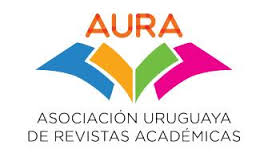TAFONOMÍA DE UNA CONCENTRACIÓN DE VALVAS DEL BIVALVO INVASOR Corbicula fluminea (MÜLLER, 1774), RÍO DE LA PLATA SUPERIOR, URUGUAY
DOI:
https://doi.org/10.26462/30.2.3Palabras clave:
Tafonomía Actualista, Corbicula fluminea , Río de la Plata , UruguayResumen
El bivalvo invasor Corbicula fluminea (Müller, 1774) es conocido en el Río de la Plata desde hace 35 años. Los estudios tafonómicos que impliquen un lapso de este rango son relevantes, ya que usualmente se tiene acceso a información estrictamente contemporánea o como muy cercano al presente, de cientos de años de antigüedad. Para este trabajo muestreamos en dos ocasiones y con la misma metodología bioclastos de C. fluminea en una localidad del Río de la Plata superior. Se estudiaron externamente la fragmentación, presencia de periostraco, corrasión, bioerosión y bioincrustación, en cuatro sectores de la valva: umbonal, anterior, central y posterior. Las frecuencias de estos atributos se compararon mediante el test de Χ2, encontrándose diferencias significativas solamente en la corrasión del sector umbonal y en la fragmentación de los sectores central y posterior. El sector umbonal fue el más afectado, atribuyéndose esto a su mayor exposición a los agentes corrasivos (i.e., impacto de clastos) en comparación con otras áreas de la valva. No se registró bioerosión ni bioincrustación, seguramente debido a la ausencia de los organismos habitualmente implicados, debido a la baja salinidad en la que se desarrolla esta especie.
Descargas
Citas
Best, M.M.R. and Kidwell, S.M. (2000a). Bivalve taphonomy in tropical mixed siliciclasticcarbonate settings: I. Environmental variation in shell condition. Paleobiology, 26, 80–102.
Best, M.M.R. and Kidwell, S.M. (2000b). Bivalve taphonomy in tropical mixed siliciclasticcarbonate settings: II. Effect of bivalve life habitats and shell types. Paleobiology, 26, 103–115.
Briggs, D.E.G. (1995). Experimental Taphonomy. Palaios, 10, 539-550.
Chattopadhyay, D., Rathie, A. and Das, A. (2013). The effect of morphology on postmortem transportation of bivalves and its taphonomic implications. Palaios, 28, 203–209.
Erthal, F. and Ritter, M. (2017). Tafonomia Atualística: conceitos e aplicaçoes. En: R.S. Horodyski and F. Erthal (Eds.) Tafonomia: Métodos, Processos e Aplicação (pp. 29–79). Curitiba, Brasil: CRV.
Evia, G. and Gudynas, E. (2000). Ecología del paisaje en Uruguay. Sevilla, España: Junta de Andalucía - Ministerio de Vivienda, Ordenamiento Territorial y Media Ambiente – Agencia Española de Cooperación Internacional.
Flessa, K. W. (1993). Time-averaging and temporal resolution in Recent marine shelly faunas. In: S.M. Kidwell and A.K. Behrensmeyer (Eds.) Taphonomics Approaches to Time Resolution in Fossil Assemblages (pp. 9–33). Short Courses in Paleontology, 6. Knoxville, USA: Paleontological Society.
Flessa, K.W. and Brown, T.J. (1983). Selective solubility of macroinvertebrate calcareous hard parts: a laboratory study. Lethaia, 16, 193–205.
Flessa, K.W., Cutler, A.H. and Meldahl, K.H. (1993). Time and taphonomy: Quantitative estimates of
time-averaging and stratigraphic disorder in a shallow marine habitat: Paleobiology, 19, 266–286.
Harper, E. M. (1997) The molluscan periostracum: an important constraint in bivalve evolution.
Palaeontology, 40(1), 71–98.
Kidwell, S.M. and Bosence, D.W.J. (1991). Taphonomy and time-averaging of marine shelly faunas. In: P.A. Allison and D.E.G. Briggs (Eds.), Taphonomy: Releasing the Data Locked in the Fossil Record (pp. 115–209). New York: Plenum Press.
Kosnik, M.A., Hua, Q., Kaufman, D.S. and Wüst, R.A. (2009). Taphonomic bias and time-averaging in
tropical molluscan death assemblages: differential shell half-lives in Great Barrier Reef sediment. Paleobiology, 35, 565–586.
Kotzian, C.B. and Simões, M.G. (2006). Taphonomy of recent freshwater mollusc and death assemblages, Touro Passo Stream, southern Brazil. Revista Brasileira de Paleontologia, 9, 243–260.
López Laborde, J. (2005). Caracterización y diagnóstico del litoral costero sobre el Río de la Plata y el Océano Atlántico (Nueva Palmira a Chuy). Informe Técnico Freplata. 97p.
Martínez, S., Rojas, A. Cabrera, F. and Antuña, D. (2020). Alien Species, a Natural Experiment in Actualistic Taphonomy. In: S. Martínez, A. Rojas and F. Cabrera (Eds.) Actualistic Taphonomy in South America (pp. 61–68). Cham, Switzerland: Springer.
Meldahl, K.H., Flessa, K.W. and Cutler, A.H. (1997). Time averaging and postmortem skeletal survival in benthic fossil assemblages: quantitative comparisons among Holocene environments. Paleobiology, 23, 207–229.
Newell, A. J., Gower, D. J., Benton, M. J. and Tverdokhlebov, V. P. (2007). Bedload abrasion and the in situ fragmentation of bivalve shells. Sedimentology, 54, 835–845.
Olazarri, J. (1986). Las almejas del género Corbicula en el Río Uruguay. Resúmenes de Comunicaciones, Seminario "El Río Uruguay y sus recursos" CARU-INAPEINIDEP. Entre Ríos, Argentina.
Parsons, K.M. and Brett, C.E. (1991). Taphonomic process and biases in modern marine environments: An actualistic perspective on fossil assemblage preservation. En: S.K. Donovan (Ed.) The Processes of Fossilization (pp. 22–65). London: Belhaven Press.
Pereira, L.G., Fornari, M., Erthal, F., Leme, J.M. and Giannini, P.C.F. (2021). Multivariate taphonomic analysis of mollusk shell concentrations in Holocene deposits of southern Brazil: An integrated approach. Palaeogeography, Palaeoclimatology, Palaeoecology, 562, 110085.
Powell, E.N., Stanton, R.J., Logan, A. and Craig, M.A. (1992). Preservation of Mollusca in Copano B a y, Texas: Thelong-termrecord. Palaeogeography, Palaeoclimatology, Palaeoecology, 95, 209–228.
Taylor, J.D.and Kennedy, W.J. (1969). The influence of the periostracum on the shell structure of bivalve molluscs. Calcification and Tissue Research, 3, 274–283.
Tietze, E. and De Francesco, C.G. (2014). Taphonomic differences in molluscan shell preservation in freshwater environments from the Southeastern Pampas, Argentina. Palaios, 29, 501–511.











